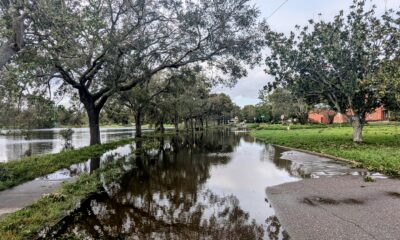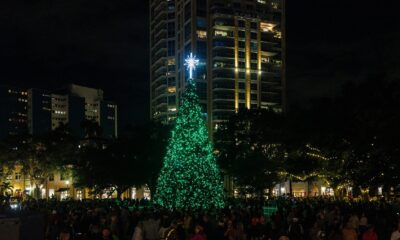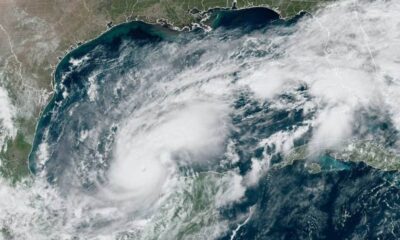Create
Where were you when the curtain fell? (Part 2)
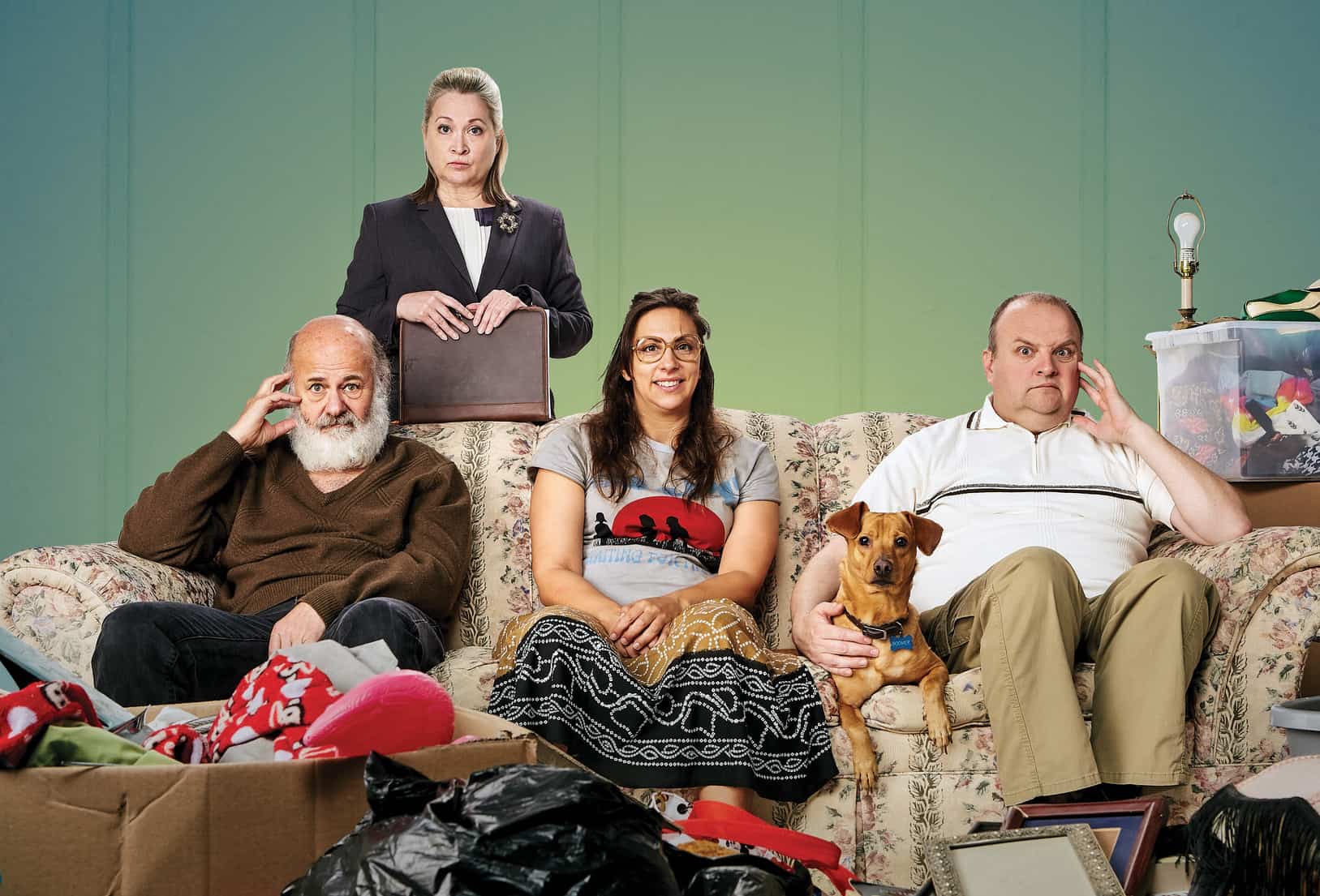
While the coronavirus had been spreading like wildfire across America, it wasn’t until this very week, one year ago, that the word pandemic entered our common vernacular, when the World Health Organization and the Centers for Disease Control declared Covid-19 an extreme and immediate threat to public health, followed by state and local government mandating the immediate closure of public gathering places. Business were shuttered and everybody went indoors, into a lockdown of their own choosing. Masks and social distancing came later.
Weekends are particularly important for the performing arts – that’s when new shows open, and when concerts attract the largest crowds. For the visual arts, Fridays and Saturdays mean opening receptions and visits from the new and the curious.
To commemorate the anniversary of the weekend when everything changed, we asked arts leaders from both sides of Tampa Bay where they were, what they were doing and how it felt when the curtain came down.
Part 2 of 2.
 Alex Harris/CEO and co-founder, Arts Conservatory for Teens: My organization was in the middle of planning its annual Champions for ACT Breakfast, which is a very significant fundraising event for us. However, when I started to hear of the shutdown I almost became creatively numb. It was as if everything in my creative process “froze.” Like many of my colleagues in the arts and other small businesses, I did not know what to make of the idea of a pandemic or “shutdown,” etc. Those words and ideas are not part of any of our vocabulary, especially industries that thrive on interactions with others.
Alex Harris/CEO and co-founder, Arts Conservatory for Teens: My organization was in the middle of planning its annual Champions for ACT Breakfast, which is a very significant fundraising event for us. However, when I started to hear of the shutdown I almost became creatively numb. It was as if everything in my creative process “froze.” Like many of my colleagues in the arts and other small businesses, I did not know what to make of the idea of a pandemic or “shutdown,” etc. Those words and ideas are not part of any of our vocabulary, especially industries that thrive on interactions with others.
Furthermore, after the realization of being “shutdown” until further notice, I started to grapple with the idea of existence without in-person interactions (meetings, events, concerts, travel, etc.). Once I embraced the reality of our “new” living situation, it felt as if a fresh river of creative thought started to flow and I was able to engage the pivoting processes of “quarantined-life” without seeing friends and family in-person or traveling.
While losses have occurred for all of us at this point in some way or another, In deep reflection, I choose gratitude in all experiences (the pleasant and not so pleasant). All of my life experiences make me the person I am. Perhaps I will never understand all of the curves and rough places or even the joys of my life’s journey, but I am grateful for things being as well as they are and I can embrace another day with a heart filled with gratitude. What doesn’t break us down or tear us apart can only make us stronger. I am grateful through it all, we’re still standing and serving thousands of teens virtually, and the single I wrote during the “shutdown” was recently recognized at #34 in the Top 40 R&B songs in USA Today in all North America.
 Kristin Clippard/Associate artistic director, American Stage: This time last year we were in previews for Natalie Symons’ comedy The People Downstairs. The final preview had gone very well and the laughter was still ringing in my ears; I was feeling very proud of the work at my then- brand new job. We were preparing to open on March 13 and made the painful decision to shutter that day, as more news poured in from across the country of similar closures. It was an extremely emotional day. There was discussion about the virus in the background that week, but we had no idea what was to come. That we were about to enter a long period of isolation.
Kristin Clippard/Associate artistic director, American Stage: This time last year we were in previews for Natalie Symons’ comedy The People Downstairs. The final preview had gone very well and the laughter was still ringing in my ears; I was feeling very proud of the work at my then- brand new job. We were preparing to open on March 13 and made the painful decision to shutter that day, as more news poured in from across the country of similar closures. It was an extremely emotional day. There was discussion about the virus in the background that week, but we had no idea what was to come. That we were about to enter a long period of isolation.
The glorious thing about being a teller of good stories is getting to focus on the ways human beings rise up and triumph. And watching my community come together to fight the virus and sustain ourselves through it has been inspiring. Here at American Stage, we have remained resilient by leaning into the innovation of our craft. We’ve looked for new ways to share a space and founded our Virtual Stage, where we continued to present compelling stories in creative ways. We have produced 37 unique performances during the last year, 17 of which were original pieces. It’s been fun to stay connected through these digital productions, but I am looking forward to listening to the plays together in real life.
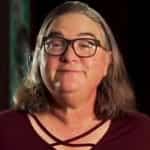 Karla Hartley/Artistic director, Stageworks Theatre: We were about to go into tech for Twelve Angry Men. We had been through about three weeks of rehearsal, we had the set built and painted – there onstage just waiting for actors to step on it. We closed the theater on that Friday (March 13). We were still a week out from opening. I had maybe 25, 30 thousand dollars into that show that just never came back.
Karla Hartley/Artistic director, Stageworks Theatre: We were about to go into tech for Twelve Angry Men. We had been through about three weeks of rehearsal, we had the set built and painted – there onstage just waiting for actors to step on it. We closed the theater on that Friday (March 13). We were still a week out from opening. I had maybe 25, 30 thousand dollars into that show that just never came back.
Nobody was sure how long it was going to last. It was all complicated by the presidential administration saying “This is nothing, in a couple weeks we’ll get back on track. It’ll go away.” So we sort of kept everybody on the hook for a couple of months.
We all knew we were going to close. It was just a matter of when. I was sort of waiting for American Stage to lead … you didn’t want to be the girl who canceled everything, and then everybody else continued to do their thing. So once American Stage called it … we just said yeah, OK.
And then we found ourselves having to invest in technology that none of us liked or wanted to deal with. The digital stuff. I was happy to just do small things and try to figure out what the plan was going to be. And we had a lot of time to do some planning for what would happen when we re-opened.

Joyce Yang performed with The Florida Orchestra March 6-8, 2020. TFO photo

Mark Cantrell/CEO, The Florida Orchestra: We had just finished our Bravura Brunch with the North Suncoast Associates, and concurrently that weekend we had Joyce Yang playing the Rachmaninoff Piano Concerto. The entire year was just better and better – each concert we had more audiences, we had more enthusiasm going, and the orchestra was sounding better and better and better. It was like the perfect storm of how things should be going. And then we had the rug ripped out from underneath us. That’s what our moment was. It was really kind of a gut punch. All this success and then wham, nothing.
There were too many questions about it, so we canceled the season in two- or three-week chunks, just to make sure if there was anything we could do, we could still do it.
We made the decision to continue to pay our contracted musicians, and we kept the benefits going. I used to be a musician, and I can very easily picture what it would have been like to have your entire livelihood, the entire heart and soul of who you are, ripped away from you. And have nothing. And they came together and did those videos on their own. It was the best definition of teamwork that corporate America could ever have, because everybody stepped in to do what needed to be done in a crisis.
Michael Francis and I were committed to, one way or another, continuing to bring music to our patrons, And for what we’ve done since October, with smaller concerts, I consider this season a smashing success.
 Laura Hine/Executive director, The James Museum of Western and Wildlife Art: We were starting 2020 with great plans, telling the world about who we are, our hopes and expectations and exciting exhibitions; we were ready to come out strong in 2020.
Laura Hine/Executive director, The James Museum of Western and Wildlife Art: We were starting 2020 with great plans, telling the world about who we are, our hopes and expectations and exciting exhibitions; we were ready to come out strong in 2020.
The second week of March was when all the information started coming out. We started meeting regularly on the CDC guidelines. There was this methodical reducing of numbers, need to wear masks, all the different pieces and then … boom. Closed. Then – now what? Making decisions, moving forward, PPC loans, all the pieces around that. From a purely operations standpoint, what does it mean to have a closed building? What does it mean for your staff? For the art?
In a way, when you go through a crisis, it can bring you closer. It can really make people have to work together, and talk about tough things. We talk about the “fog of war,” right? I think that’s essentially what people were feeling. People in all business, people in their personal lives, were feeling what military leaders talk about, the fog of war, when the first bullet is fired. How do you manage yourself and your people emotionally through that? I remember thinking about that: We’re all feeling this chaos and uncertainty, how do you manage and make decisions thoughtfully through that?
I feel like we did as best as we could. We had to reduce our staff, like everyone did. Which is always difficult. And then deciding to re-open, and what’s the right way to do that? Walking through the visitor experience and always keeping safety top of mind. So even as occupancies opened up, as far as the government goes, we have kept very limited occupancies when it comes to things like events.
Our next couple of years of exhibitions are incredible. I’m so excited to tell everybody about them. Our vision is to be an influential and thought-provoking art museum that inspires every visitor.
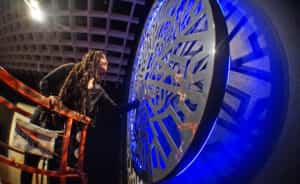
Ya La’Ford at work. Photo provided by the artist
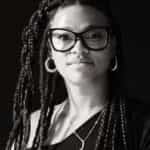 Ya La’Ford/Artist: As a species, we indeed naturally gravitate towards being social and through the ages that sense of interconnection has defined who we are and our sense of purpose. The Covid shutdown in many ways challenged this tradition and presented a new sense of denial, ambiguity, perplexity and displacement as to how as a society we were to function with a new set of rules, boundaries and social engagement. The creative economy was equally disrupted as at that moment, I was completing a solo exhibit in Pompano Beach along with preparing for the Skyway exhibition, a solo show at HCC Gallery221, along with fabricating public art works.
Ya La’Ford/Artist: As a species, we indeed naturally gravitate towards being social and through the ages that sense of interconnection has defined who we are and our sense of purpose. The Covid shutdown in many ways challenged this tradition and presented a new sense of denial, ambiguity, perplexity and displacement as to how as a society we were to function with a new set of rules, boundaries and social engagement. The creative economy was equally disrupted as at that moment, I was completing a solo exhibit in Pompano Beach along with preparing for the Skyway exhibition, a solo show at HCC Gallery221, along with fabricating public art works.
I think as an artist, I was constantly thinking about how art best relates to events occurring in the natural world and so I discovered that the pandemic created such a sense of urgency. We needed to modify the way we consider movement, interaction and engagement to use art as a tool to bond people to each other and their communities. Moving forward required a greater sense of situational awareness and consideration for safety measures.
Much of the community engagement events increased the need for protective equipment and cleaning supplies along with spacing, or the need to perform events outdoors. While it took some modifications, we were able to move forward in a way that made people feel involved and connected through the universal language of art.
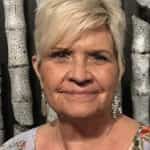 Jane Buckman/Executive Director, Imagine Museum: March 1, 2020: We had seen the largest growth in our attendance since our opening in 2018. By the end of March our revenues were down by 75 percent from the previous year, and it only became worse as the months progressed. We closed for only five weeks, and were one of the first museums to re-open with safety protocols in place and ready to see the pandemic through safely for our staff and visitors. It is part of our mission to inspire and uplift, and we felt there was not a greater need than to inspire and uplift our community through the beauty of our collection and the sanctuary our galleries provide. We offered tickets on Sunday for only $5 to ensure that individuals and families that needed a safe environment to reflect, relax, experience joy and community could, for a small price, have that opportunity. We offered special tours and virtual programming to keep our community engaged.
Jane Buckman/Executive Director, Imagine Museum: March 1, 2020: We had seen the largest growth in our attendance since our opening in 2018. By the end of March our revenues were down by 75 percent from the previous year, and it only became worse as the months progressed. We closed for only five weeks, and were one of the first museums to re-open with safety protocols in place and ready to see the pandemic through safely for our staff and visitors. It is part of our mission to inspire and uplift, and we felt there was not a greater need than to inspire and uplift our community through the beauty of our collection and the sanctuary our galleries provide. We offered tickets on Sunday for only $5 to ensure that individuals and families that needed a safe environment to reflect, relax, experience joy and community could, for a small price, have that opportunity. We offered special tours and virtual programming to keep our community engaged.
When faced with such a serious disruption to our business, I’m grateful to our staff who pulled together in remarkable ways in order to establish a crisis strategy that would bring positive results despite the downturn in business. We continued to operate, bringing in new exhibits and safely inviting our members in for opportunities to see and learn. We moved our programming to “virtual” with all that implies and now know, to connect the world to Imagine Museum, virtual programming will continue to be one of our programmatic offerings. I’m pleased we are beginning to see an increase in our attendance, knowing through data how our work over the last year is paying off.
 John Collins/Executive Director, St. Petersburg Arts Alliance: On Friday the 13th, we took our computers home and I spent the weekend trying to do two things. First, figure out how to continue our service and programs virtually. Second, figure out how we could raise funds for the creatives who were suddenly unemployed.
John Collins/Executive Director, St. Petersburg Arts Alliance: On Friday the 13th, we took our computers home and I spent the weekend trying to do two things. First, figure out how to continue our service and programs virtually. Second, figure out how we could raise funds for the creatives who were suddenly unemployed.
On Monday, I emailed to see if we could collaborate and start an arts emergency relief fund. On Wednesday I think, Barbara St. Clair called and we agreed to work together. By Friday, we had Duggan Cooley and the Pinellas Community Foundation on board to serve as our sort of logistical center and receiver of funds.
We all went to work fundraising, getting the word out, and meeting constantly online to develop the most equitable way to award the grants. Within four weeks from going home that Friday, on April 12, Easter Sunday, I wrote the checks.
I think we were the first in Florida to award the relief. We found it wasn’t for arts stuff; top requests were for food, rent, medical treatment and car payments. Just like everyone else who lost their income. We also began blasting out other Covid emergency relief information to our constituencies and revamped our arts workshops to teach people where and how they could apply for funds.
We will continue to expand the virtual studio/gallery tours. I am very proud of them because they are not a sterile camera tour of a gallery; they present the artists and/or gallerists meeting you at the at the front door to take you on the video tour, and talk about their aesthetics – and you hear the passion from these creatives who have devoted their lives to their art work.
Read Part 1 here


